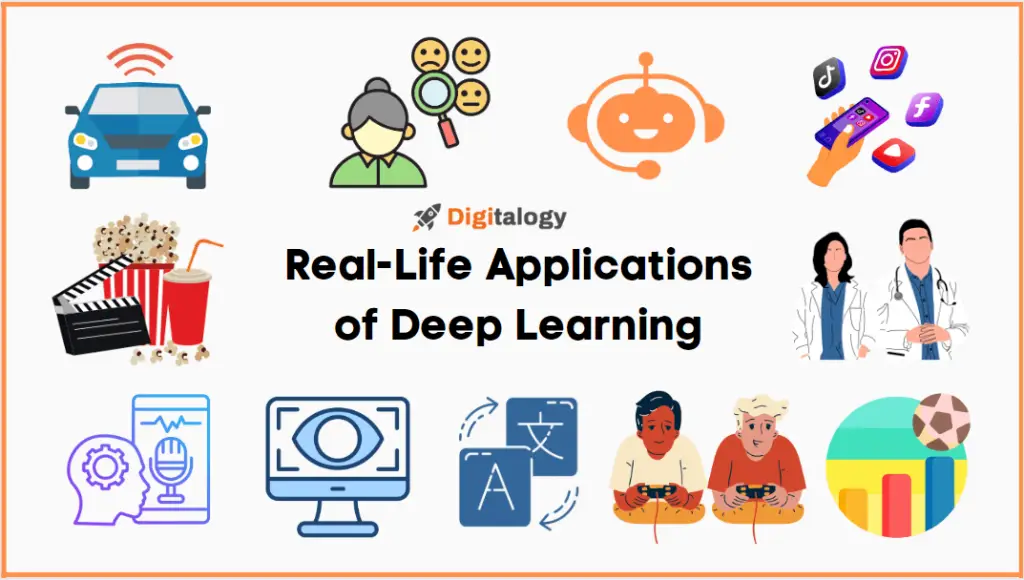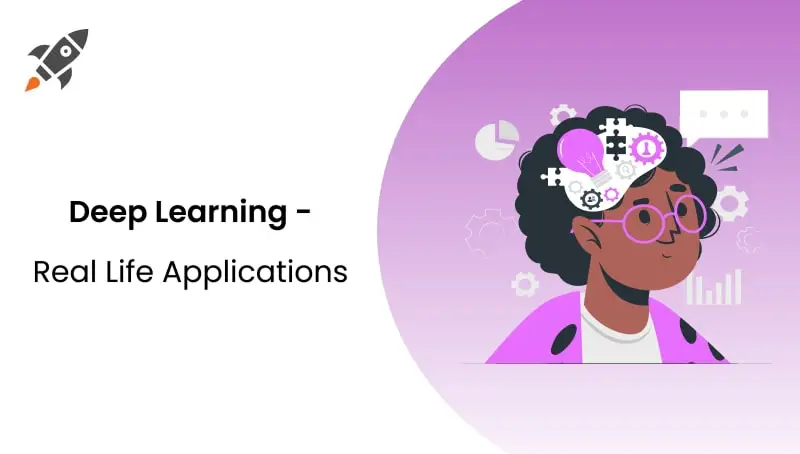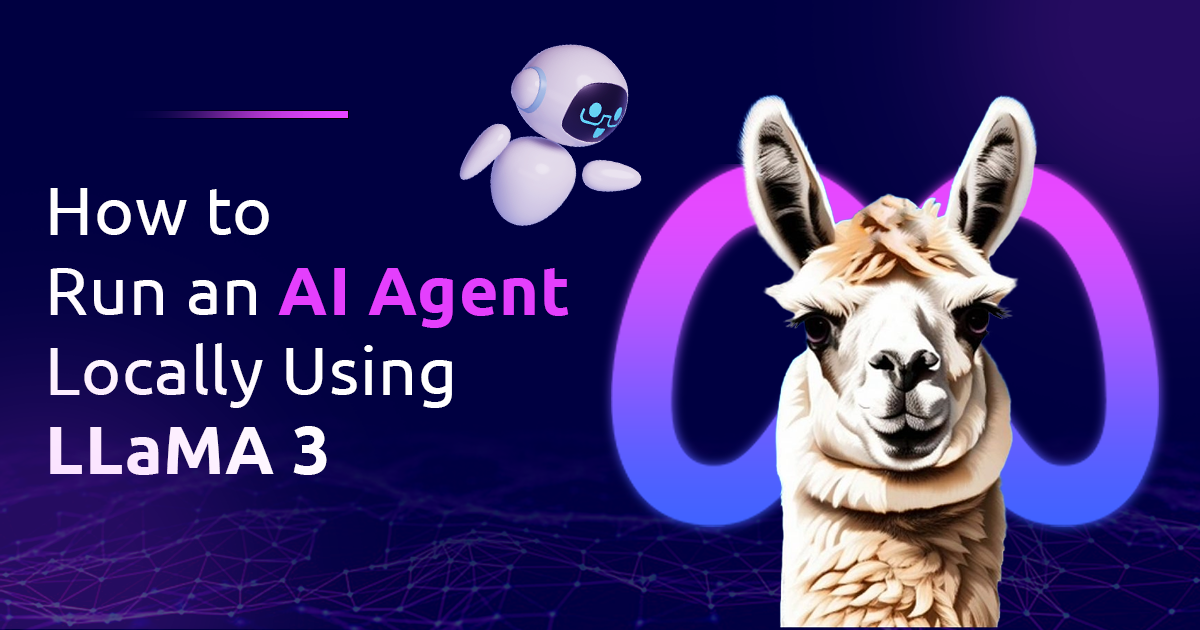AI and machine learning have evolved into many areas of applications and use cases. Deep Learning is a developing branch of machine learning that has elevated machines and algorithms with superior analysis and learning patterns. Deep learning artificial intelligence is a sector of AI that is relatively new and still has a lot of scope to develop.
Deep Learning Explained: What Is Deep Learning?
Deep Learning mimics human learning processes by combining machine learning with artificial intelligence. Data and knowledge engineering have the potential to create machines that are highly intelligent and automated. Deep Learning uses analytics and data to predict patterns and make decisions based on them.
How does Deep Learning Work?
Deep Learning ai works with the help of artificial neural networks. These artificial neural networks gather data inputs from the various nodes of a machine and use them for analytics. They use data and analytics to create algorithms that recognize and classify objects. Each algorithm in the network acts like a non-linear node in which the transformation process helps it in Learning.
What it learns is used to create a statistical model as an output which is the basis of decision-making. The neural networks iterate the data and continue adapting until the pattern created is completely accurate. There are many layers through which the data must pass, and this gives its name to Deep Learning.
Deep neural networks consist of multiple layers of interconnected nodes, which actively cooperate to enhance and refine the data processed by the preceding layer. To mimic the accuracy of the human brain, these neural networks have to be that complex. The input layer and the output layers hold significant importance, as the input layer takes in the data that needs to be processed.
The output layer, on the other hand, creates the final prediction pattern or the final statistical model for the machine and these two layers are called the visible layers. As deep Learning evolves, companies are able to develop more and more complex networks and algorithms for predictive analytics and decision-making.
Also, Read – Most Useful Features of Chat-GPT
How Deep Learning is Better Than Machine Learning?
Deep Learning algorithms involve at least three layers of neural networks, representing a higher form of machine learning. These neural networks, when combined with machines, attempt to simulate the human brain and learn from data and predictive patterns. These neural networks gather data and study a large amount of data to create new learning patterns that are as intelligent as an average human.
How Deep Learning is Useful in Automation?
- Automation, prediction, and prevention are easier with the use of Deep Learning abilities. Deep Learning, when combined with artificial intelligence, can increase the capabilities of traditional machines.
- More than this Deep Learning can be utilized to enhance automation and accomplish analytical tasks without the need for human commands or intervention.
- Deep Learning is an integrating technology that is being incorporated into everyday machines, leading to the emergence of new and advanced technologies.
- Research and development in the area of deep Learning machines is an ongoing process.
- Deep learning applications can be implemented in different areas of life. Deep learning applications can act as assistants and replacements for humans in certain cases and tasks.
List of 11 Real-Life Applications of Deep Learning

Deep Learning is a dynamic field, and there are many possibilities for its applications. The developments that are happening now are just the tip of the iceberg. These applications are evolving and will be superior in the coming years. The most used and promising applications of deep Learning are as follows-
- Autonomous vehicles
Autonomous vehicles or self-driving cars are a very exciting development in the industry of automobiles. Self-driving cars come with advanced driving features, intelligent interfaces, and safety features that allow humans to relax while riding a car.
The use of autonomous vehicles can be done in civil areas and the military sector if deep learning and artificial intelligence develop further. By combining convolutional neural networks with machine learning capabilities, self-driving cars can be controlled and fine-tuned.
The algorithms are specifically designed to enable the car itself to recognize objects such as traffic signs, pedestrians, and other vehicles on the road, allowing it to drive autonomously and mimic human-like behavior.
- Sentiment Analysis
The future of customer psychographics and understanding customer needs is in deep learning application of sentiment analysis. Customer service and human interactions can be improved with the help of sentiment analysis.
The use of natural language processing, text and speech analysis, and statistical modeling help create patterns that predict customer sentiments and behavior. With the use of sentiment analysis tools, businesses can improve customer service by leaps and bounds.
Customer sentiments and responses can also be classified by machines, and according to this classification, the machine responds. Sentiment analysis is like an assistant for AI-powered chatbots. Companies can also monitor customer activity online and understand the sentiments of the customers to know the prospects of their company. This tool will be a massive help in marketing and promotions.
- Virtual Assistant
Virtual assistants are already very popular and used on different devices and websites. While virtual assistants are created using AI and machine learning, deep Learning is the next step. Virtual assistants can use text recognition and speech recognition capabilities as well as NLP to gather data about the user and predict behavioral patterns.
This improves the automated decisions that the virtual assistant makes and also improves the communication between the program and the user. Virtual assistants can become more human-like and customized with the help of adaptable deep-learning capabilities.
- Social media
Social media has a massive influence on people’s lives and also acts as a tool for businesses. It is like a door that connects businesses to customers. Even social media companies like Twitter and Facebook are using deep neural networks and Learning patterns to predict social media activity and monitor cyberbullying. The platforms also use deep Learning to personalize recommendations through knowledge of user preferences. This allows social media platforms to customize the personal feed of the user.
- Entertainment
Another area in which the application of deep Learning is becoming extensive is entertainment apps. The popularity of OTT platforms and video streaming apps has recently increased. Entertainment apps are taking up the use of deep Learning and predictive analytics to improve recommendations and patterns of behavior for the customer.
The user can get recommendations that suit his/her taste in entertainment. The ultimate result is the improvement of customer service and satisfaction from such apps. On the other hand, deep learning algorithms can also change audio into subtitles with the help of AI and predictive analytics.
- Healthcare
In recent times, there has been a growing emphasis on bolstering the healthcare sector through the integration of technical applications, aiming to expedite the delivery of services. Deep Learning is a technology that has garnered interest within the healthcare industry.
By collecting and storing patient data, along with the utilization of wearable sensors, healthcare services have witnessed improvements in their overall framework, enabling a faster provision of these services to patients.
Monitoring a patient’s health condition based on his vitals and predicting his health state before any incident happens is an application of deep learning networks. These networks can automatically alert caretakers and doctors about potential risks to patient health, facilitating prompt and proactive actions. Deep Learning, therefore, helps doctors in saving lives.
- Speech Recognition
Deep Learning is often combined with speech recognition and text recognition. These capabilities help machines understand the interactions of humans and improve machine-human interaction. Based on the data gathered from speech recognition, deep learning networks help make decisions for the machine.
These applications actively support the utilization of Long Short-Term Memory (LSTM) recurrent neural networks, which undergo training for tasks such as speech recognition, data collection, and analytics. Additionally, they also incorporate Convolutional Neural Networks (CNNs) for enhanced performance and functionality.
- Computer Vision
In the future, computer vision will be used to create advanced optics gear. Computer vision is a technical application of deep learning networks that recognize objects in a visual scene. Computer vision can help the visually impaired and other people who need help with navigating a landscape and finding objects in space. It can be used by common people and also in the military once the technology becomes widely available.
- Machine Translation
Machine translation is a capability of deep learning networks that can automate the translation process and display the output for humans without the help of the user. Translating from one human language to another based on the language preference of the user becomes easy with deep learning algorithms.
Now, the user does not have to worry about going to translation sites and putting in manual inputs for step-by-step translation. The steps of translation become condensed with the use of AI and deep Learning.
- Video Games
Deep learning networks are evolving to become adaptable. This capability comes in handy for video gaming enthusiasts. Deep learning networks have been able to predict patterns in a game and learn how to play a game like a human player.
Therefore, gamers can use such deep learning applications to practice video gaming in a PvP play before gaming tournaments. Like all other virtual assistants, even gaming assistants are possible with the help of deep learning networks.
- Sports Analytics
Teams and coaches in different arenas of sports like cricket, football, and hockey are utilizing sports analytics tools for practice and training, as sports emerge as a multi-billion dollar industry and sports tournaments gain increased significance. Sports Analytics, as an emerging field, plays a vital role in providing insights and data-driven strategies to improve performance and enhance decision-making in the sporting domain.
Deep learning networks can leverage data collected from player movements and gameplay to enhance player strategy and optimize practice approaches. These tools allow coaches to automate the analytical processes before the execution of strategy.
Conclusion
These are some of the most useful applications of deep Learning. Deep Learning and neural networks depend on the collection of data and their analysis to automate tasks and make decisions like humans.
Deep Learning can improve existing processes and eliminate many repetitive processes that exist in manual work. Major industries across various sectors, from automobiles to healthcare, are actively investing in deep learning to enhance their processes, improve the quality of life, and maximize profits.
Deep learning applications are designed with a specific focus on optimizing processes related to public life and raising industry standards. Individuals, as well as organizations, benefit from the real-life applications of deep Learning and neural networks.







